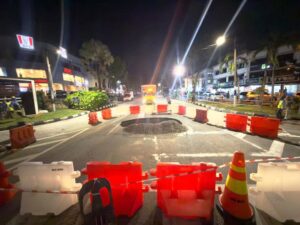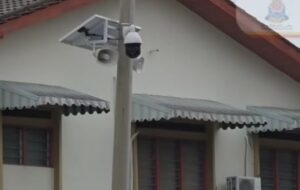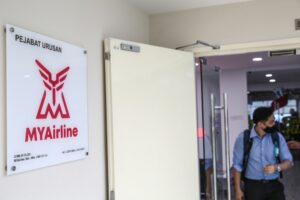KUALA LUMPUR, Oct 6 — The April gas pipeline explosion in Putra Heights that injured more than 100 people and damaged hundreds of homes was primarily caused by unstable soil conditions and repeated mechanical stress on the pipeline.
These were among the findings highlighted by the Parliamentary Special Select Committee (PSSC) on Infrastructure, Transport and Communications after its engagement with relevant agencies.
The committee, in a report tabled in Parliament, revealed that the Petronas Gas Berhad (PGB) pipeline met all technical specifications but failed due to “cyclic loading” — repeated stress over time — combined with soil subsidence and water accumulation beneath the surface.
However, it noted that only four agencies submitted their full investigation reports during the engagement session held on August 8 — the Selangor State Secretary’s Office, Department of Minerals and Geoscience (JMG), Department of Occupational Safety and Health (DOSH), and the Royal Malaysia Police (PDRM).
The remaining agencies — the Fire and Rescue Department (JBPM), Petronas Gas Berhad (PGB), Public Works Department (JKR), Ministry of Works (KKR), Ministry of Housing and Local Government (KPKT), Subang Jaya City Council (MBSJ), and the Construction Industry Development Board (CIDB) — have yet to submit their reports.
The committee urged these agencies to furnish their findings promptly to ensure full transparency and accountability.
No sabotage found
According to PSSC chairman and Gabungan Parti Sarawak (GPS) Tanjong Manis MP Yusuf Abd Wahab, investigators ruled out sabotage or human negligence.
He said the causes identified were soil instability, subsidence, water pooling beneath the surface, and metal friction that triggered ignition.
“DOSH has since ordered PGB to conduct integrity testing on all isolation valves, perform strain analysis using GeoPIG (Geometric Pipeline Inspection Gauge) and EML (Electro-absorption Modulated Laser) technology, reassess geohazard risks and step up maintenance at nine high-density areas — Indera Mahkota, Tebrau, Jalan Masai, Seremban 2, Subang Jaya, Shah Alam, Putra Damai, Bandar Prai and Kuala Muda,” Yusuf said in Parliament today.
Other measures include satellite-based ground monitoring, pressure loss alarm detection, increased pipeline patrols, tighter development control in Right of Way (ROW) zones, and improved real-time monitoring and emergency preparedness.
On top of existing preventive measures, the committee also made 11 recommendations after reviewing investigation reports that could be adopted to strengthen infrastructure safety.
Among them are:
Tighten development approvals near gas pipelines, requiring mandatory technical input from DOSH, JMG, PGB and local authorities.
Establish a clear, transparent compensation mechanism for victims of critical infrastructure incidents, including an appeals process.
Expedite national geohazard mapping for all major gas pipeline routes and create a Critical Infrastructure Disaster Relief Fund for immediate assistance to victims.
Review existing laws to strengthen legal protection for critical infrastructure and close gaps in liability.
Enforce stricter maintenance standards and require annual independent safety audits for all gas and utility pipelines.
Set up a permanent coordination mechanism among federal, state and local authorities to improve emergency response and avoid overlapping responsibilities.
The committee also drew attention to a recent gas pipeline leak on September 20 at a section of the East Coast Rail Link (ECRL) project site, though no explosion occurred.
“This latest incident underscores the need for continuous monitoring and enforcement of geotechnical safety measures.
“The Putra Heights explosion is a stark reminder that environmental, technical and developmental factors must be managed comprehensively.
“Implementing these recommendations is critical to safeguard public safety and maintain confidence in the nation’s utility infrastructure,” Yusuf added.
The explosion, which occurred on the second day of Hari Raya Aidilfitri, generated a massive fireball rising more than 30 metres high, with temperatures exceeding 1,000°C. It created a crater measuring 80 metres long, 70 metres wide and eight metres deep.
It damaged over 500 houses and nearly 400 vehicles, injuring more than 100 people, while one of the three main PGB gas transmission lines was destroyed.
The committee noted that more than RM10 million in immediate aid had been provided by the federal and state governments, Petronas and private firms, including temporary accommodation, cash compensation and logistical support.





